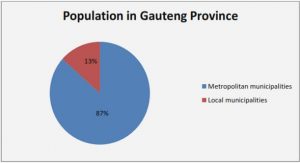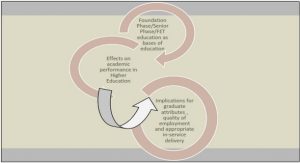Get Complete Project Material File(s) Now! »
Prevalence and incidence of blindness
According to the report of the World Health Organization (WHO, 2014), the number of people with blindness is globally estimated to be 39 million, with 5.88 million residing in Africa. With specific reference to children, the findings by Wright (2008) indicate that approximately one in 10 000 children are born blind. There is an estimate of 1.4 million children with blindness worldwide, with 320 000 members of this population residing in subSaharan Africa (Kello & Gilbert, 2003). Amongst the many factors influencing the prevalence of visual impairment, socio-economic status and the under five mortality rate are indicated as the predominant factors. Prevalence ranges from approximately 0.3 per 1 000 children in high-income countries to 1.5 per 1 000 children in low-income countries (Kello & Gilbert, 2003). Many causes of blindness, as much as 80% (WHO, 2014), are either preventable or curable and are related to the under five mortality rate. The most predominant cause in the poorest countries in the world is corneal scarring, while the most important causal factor in highincome countries is lesions of the central nervous system. The causal presentation in middleincome countries is varied, but retinopathy of prematurity arises as an important avoidable cause of blindness. Globally, the most important causes of blindness in children are retinal diseases and congenital abnormalities. Frick and Foster (2003) indicated that if the Vision 20/20 programmes are successfully implemented, prevalence will decrease by the year 2020 to 0.3%. However, should it not be successful, prevalence will likely increase with 0.1%. In South Africa, the prevalence of blindness (overall population including both adults and children, as differentiated statistics are not available) was estimated by the Statistics South Africa Community Survey in 2016 at approximately 1 per 1 000 individuals in the total South African population (Statistics South Africa, 2016). This shows a decrease from the 2011 South Africa Census, which established blindness for the overall population to be 2 per 1 000 individuals.
Theory of Mind in children with blindness
Within the field of emotion research, authors such as Parkinson, Fischer, and Manstead (2005) support the idea that comprehending minds come through interaction because many emotions are interpersonal rather than purely intrapsychic. Thus, humans do not make an inferential leap to guess the minds of others, as they are actually part of that same shared emotion episode in a shared reality, that is, process of social constructionism. This is particularly applicable to HOEs such as social emotions (e.g. pride and arrogance) as well as moral emotions (e.g. contempt) (Morris, Doe, & Godsell, 2008). HOEs can accordingly be understood to be prevalent in the shared experience of a joint psychological reality and operate through the mechanism of ToM in which they are embedded. In a typically developing child, the process of developing ToM is facilitated through sight. The lack of vision prevents the development of important ToM precursors such as shared experiences based on joint visual attention and visual observations of subjective emotion states (Bedny, Pascual-Leone, & Saxe, 2009; Begeer, Dik, Voor de Wind, Asbrock, Brambring, & Kef, 2014; Minter et al., 1998). The antecedents of ToM development include forms of non-verbal communication that begin to function at birth (Korkmaz, 2011). Perceiving faces and identifying facial expressions of emotions, specifically when identifying HOEs, are paramount for the perceptual components of ToM. Several studies have recounted impairments in the ToM in children from this population (McAlpine & Moore, 1995; Minter et al., 1998; Wellman & Liu, 2004). Results of earlier studies (Baron-Cohen, 2003; McAlpine & Moore, 1995) conducted with children who are blind mutually supported the finding that a general ToM developmental delay of four to seven years can be expected in the majority of these children. The landmark study of McAlpine and Moore (1995) depicted a developmental trajectory of ToM in blind and severely visually impaired children. The research results indicated that blind children, aged seven to eight years have the lowest results on all tested levels of ToM. At the age of nine to ten, blind children show much better results on ToM tasks. Baron-Cohen (2003) found that children with severe visual impairment and blindness do not achieve success on ToM tasks before the age of 11, whereas typically developing sighted children can solve simple false belief tasks by four or five years of age (Wellman & Liu, 2004) and pass more complex false belief tasks by age six to seven (Baron-Cohen, 2003).
CHAPTER 1: INTRODUCTION
1.1 Introduction
1.2 Problem Statement
1.3 Definition of Terms
1.4 List of Abbreviations and Acronyms
1.5 Chapter Outline
1.6 Conclusion
CHAPTER 2: LITERATURE REVIEW
2.1 Introduction
2.2 Overarching Theoretical Perspective
2.3 Early Childhood Blindness
2.4 The Construct of Emotion
2.5 Emotion Development in Children
2.6 Conclusion
CHAPTER 3: METHODOLOGY
3.1 Introduction
3.2 Research Aims
3.3 Design and Phases of the Research Process
3.4 Participant Selection and Recruitment
3.5 Material and Equipment
3.6 Procedures
3.7 Data Analysis
3.8 Ethical Considerations
3.9 Conclusion
CHAPTER 4: RESULTS
4.1 Introduction
4.2 Statistical Inference
4.3 Procedural Integrity
4.4 Reliability of Data Collected
4.5 Internal Consistency and Construct Validity of the Cambridge Mindreading FaceVoice Battery for Children Voice Task for this Study
4.6 Group Equivalence
4.7 Research Results of the Main Measurement Instrument: The Cambridge Mindreading Face-Voice Battery for Children Voice Task
4.8 Analysis of Patterns of Responses on CAM-C Voice Task Items
4.9 Conclusion
CHAPTER 5: DISCUSSION
5.1 Introduction
5.2 Reliability and Construct Validity of the Cambridge Mindreading Face-Voice Battery for Children Voice Task (Higher-Order Emotion Items)
5.3 Higher-Order Emotion Identification in Others by Children with Blindness
5.4 Higher-Order Emotion Identification in Others by Typically Developing Children
5.5 Comparison of the Accuracy with Which Children with Blindness and Typically Developing Children Identify Higher-Order Emotions
5.6 Patterns of Responses to Cambridge Mindreading Face-Voice Battery for Children Voice Task
5.7 Conclusion
CHAPTER 6: CONCLUSIONS
6.1 Introduction
6.2 Summary of Findings
6.3 Clinical Implications
6.4 Evaluation of the Study
6.5 Recommendations for Future Research
6.6 Summary






